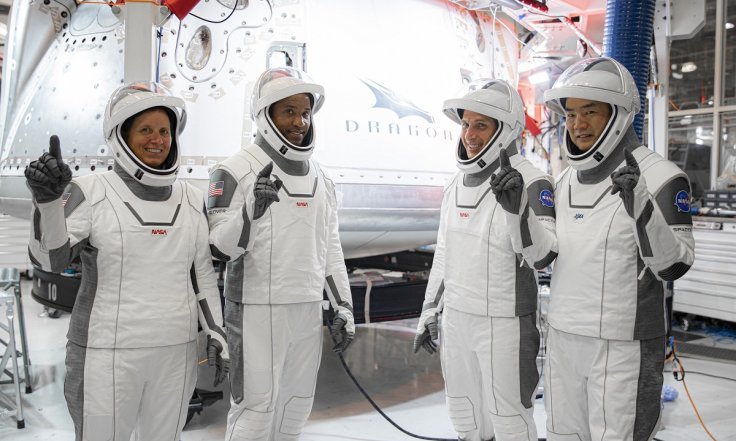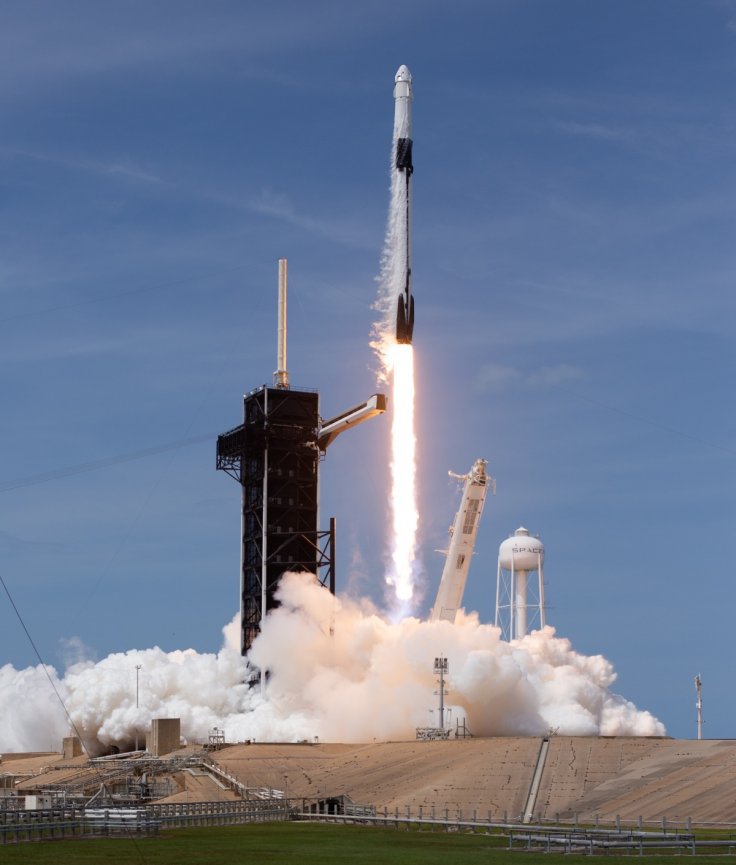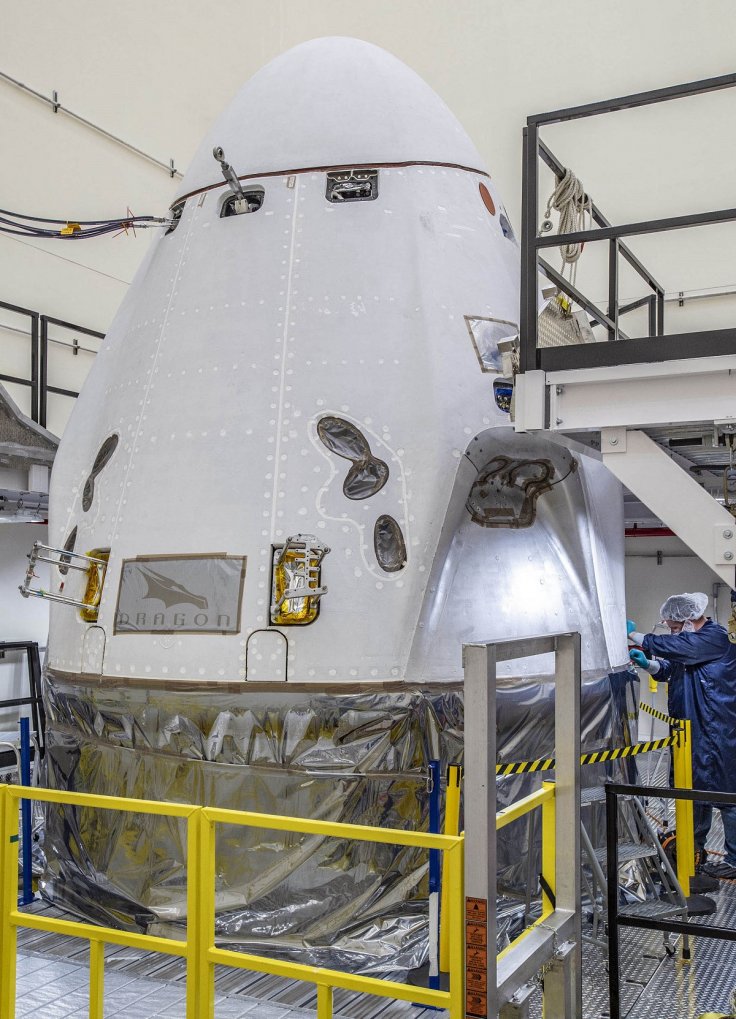The National Aeronautics and Space Administration (NASA) has delayed the launch of the Crew-1 mission that will take four astronauts to the International Space Station (ISS) atop a SpaceX Falcon 9 rocket on October 31. The launch is now expected not before "early to mid-November". The reason for the delay is a problem in the Falcon 9's first stage engine gas generator.
Crew-1 will be SpaceX's first operational flight following Demo-2's successful test run in May that carried NASA astronauts Doug Hurley and Bob Behnken to the ISS and back. Demo-2 marked a new chapter in the space program as it became the first commercial venture to carry astronauts to space.
Ever since the Space Shuttle program was canceled in 2011, NASA had to rely on Russian Soyuz spacecraft to transport crew to the ISS. With the SpaceX capsule, NASA will no longer have to rely on a foreign space agency.
NASA on the Crew-1's delay said it was to give "additional time for SpaceX to complete hardware testing and data reviews as the company evaluates off-nominal behavior of Falcon 9 first stage engine gas generators observed during a recent non-NASA mission launch attempt."

Gas Generator Issue
The issue was observed during SpaceX's attempted launch of the GPS III SV04 satellite atop a Falcon 9 rocket on October 2. The launch for the U.S. Space Force was aborted with just two seconds left on the countdown clock. Later, Elon Musk, SpaceX CEO clarified on Twitter that the launch was aborted due to an "unexpected pressure rise in the turbomachinery gas generator" that helps power the Falcon 9 rocket's first stage Merlin engines.
"With the high cadence of missions SpaceX performs, it really gives us incredible insight into this commercial system and helps us make informed decisions about the status of our missions. The teams are actively working this finding on the engines, and we should be a lot smarter within the coming week," Kathy Lueders, associate administrator of NASA's Human Exploration and Operations Mission Directorate, said in the blog post.

Heat Shield Issue
However, this is not the first time SpaceX is facing an issue with its launches. Of late, SpaceX has been facing multiple problems with its rocket and capsule. Following the Demo-2's successful mission, SpaceX noticed "excessive erosion" in few areas of the Crew Dragon's heat shield which is one of the most essential components of a manned-mission. As the capsule reenters Earth's atmosphere, the heat shield saves the capsule and the astronauts from the intense heat that can reach up to 2,000 degrees Celsius (3,500 Fahrenheit).
SpaceX said that it had solved the problem, reinforcing the heat shield with better materials. "We've gone in and changed out a lot of the materials to better materials. We've made the area in between these tiles better," said Steve Stich, Program Manager for NASA's Commercial Crew Program, adding that it was ready to go for the next mission.

Elon Musk's company also had to abort another launch that was scheduled to take 60 Starlink satellites to the lower Earth orbit. The launch was scrapped with just 18 seconds to go due to a problem with a ground sensor. While SpaceX's next attempt was successful, Musk said the company would need to "make a lot of improvements to complete 48 launches next year."
In a tweet on October 3, the Tesla CEO also said that SpaceX was conducting "a broad review of the launch site, propulsion, structures, avionics & regulatory constraints" and he would travel to Cape Canaveral "to review hardware in person."
As NASA bets heavily on SpaceX, a lot depends on the company. NASA said that upcoming missions would rely on Falcon 9 launches. The Crew-1 mission will carry NASA astronauts Michael Hopkins, Shannon Walker, Victor Glover besides Japanese astronaut Soichi Noguchi to the ISS. They will be stationed for the next six months.









